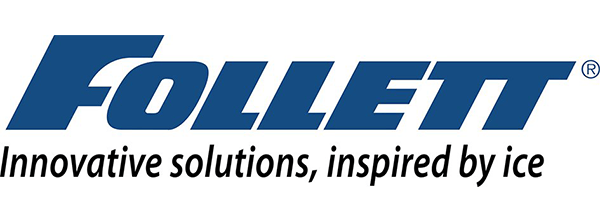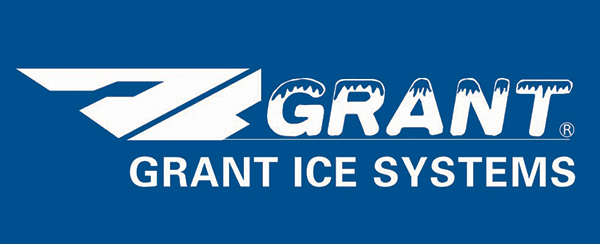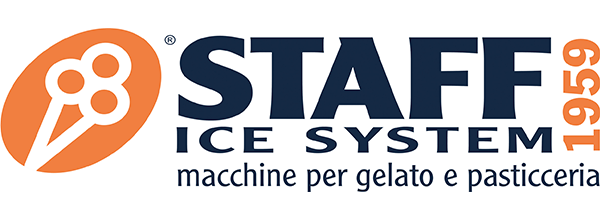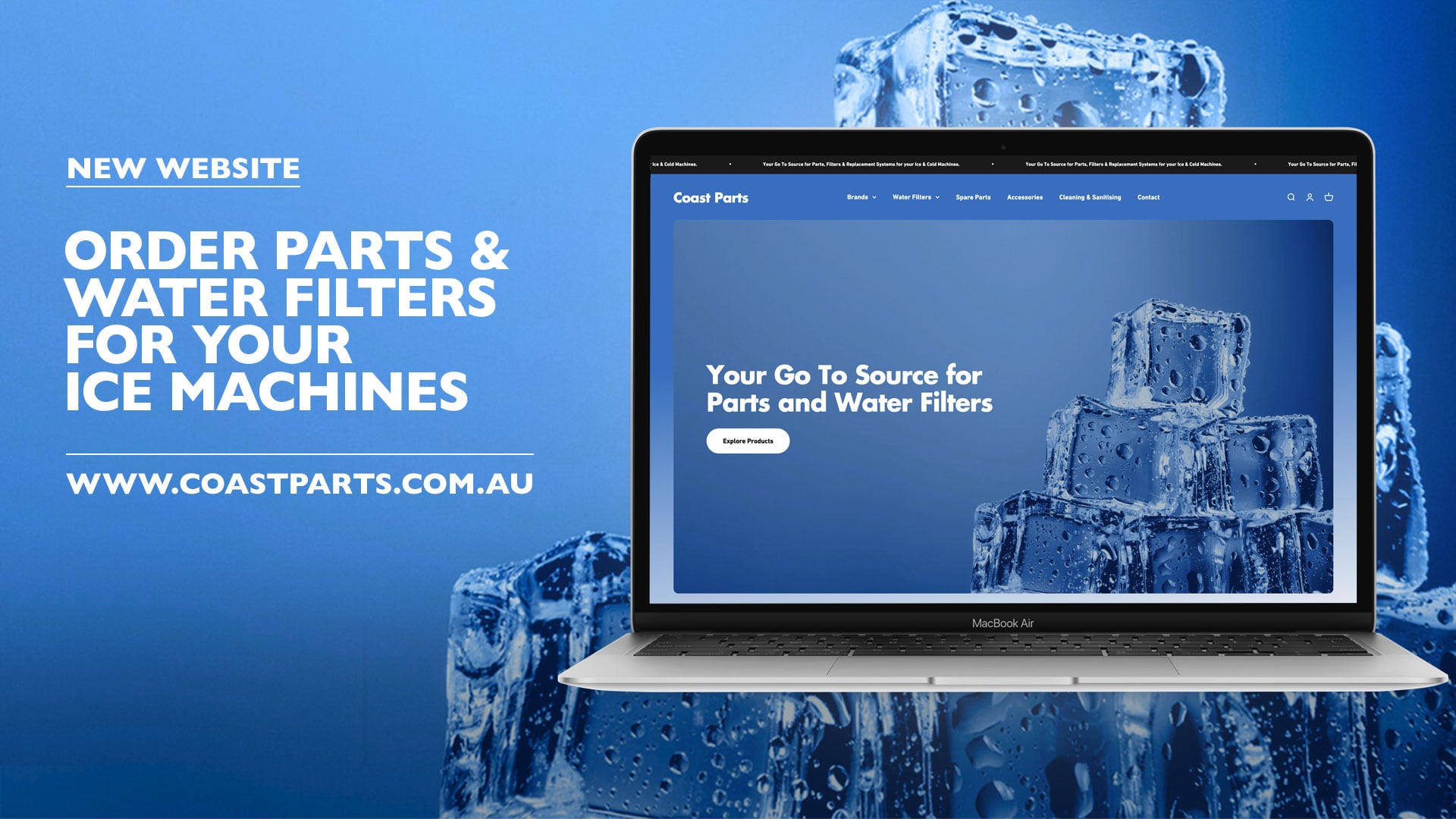Choosing the Right Ice Machine for Your Business Needs
The Coast Team on 17th Nov 2025
Finding the right ice machine ensures smooth operations, meets Australian food safety standards, and keeps your business efficient. The wrong choice can lead to higher costs, inefficiencies, and customer dissatisfaction.
Here's what you need to know:
Types of Machines:
- Modular: High output, separate storage, ideal for large demands
- Undercounter: Compact, combines production and storage, great for small spaces
- Countertop: Small-scale production, suitable for niche uses like cafés
Ice Types:
- Cube Ice: Long-lasting, great for drinks
- Crescent Ice: Fits well in glasses, enhances presentation
- Flake Ice: Perfect for seafood displays and healthcare
- Nugget Ice: Soft, chewable, preferred in healthcare and food service
Key Considerations:
- Calculate daily production and storage needs based on peak demands
- Ensure energy efficiency to reduce running costs
- Regular maintenance is essential for hygiene and longevity
- Compliance with Australian food safety standards is non-negotiable
The right machine depends on your industry, space, and budget. For example, restaurants may favour compact undercounter models like the Ice-O-Matic ICEU225, while seafood retailers need high-capacity flake ice machines. Always factor in installation needs, energy costs, and long-term maintenance when making your decision.
Ice Machine Types and Ice Forms Explained
Choosing the right ice machine and ice form for your business is all about aligning with your specific needs. Each setup has its own strengths, tailored to fit various spaces, production volumes, and operational demands.
Machine Types: Modular, Undercounter, and Countertop Options
Modular ice machines are the powerhouses of commercial ice production. These machines separate ice production from storage, offering high output with adaptable storage options. For example, Grant's FFAR Series flake ice makers produce ice at -9°C, perfect for seafood displays and food processing, delivering consistent production. The modular design allows you to adjust storage independently from production, making them ideal for businesses with fluctuating ice needs.
Undercounter models, like the Ice-O-Matic ICEU225, combine production and storage in a compact design that fits neatly under standard benches. This unit can produce up to 96kg of ice daily and store 32kg internally, making it a great choice for restaurants, cafés, and bars where space is tight. Its self-contained design simplifies both installation and maintenance while ensuring a reliable ice supply.
Countertop units, such as the Follett E7CI114A, are designed for smaller operations where space is at a premium. With a daily production capacity of 54.4kg and 3.2kg of storage, these machines are perfect for coffee shops, small restaurants, or niche applications that require moderate but consistent ice production. Their compact design allows them to sit conveniently on work surfaces, keeping ice production close to where it's needed.
Your choice of machine will depend on your daily ice requirements and the space you have available. Modular machines are the go-to for high output and flexibility, while undercounter and countertop options are better suited for businesses with limited space.
Now, let's look at the different types of ice and their specific uses.
Ice Types and Where to Use Them
The type of ice you choose can make all the difference in meeting your business needs.
Cube ice is a favourite for its versatility. Its slow-melting nature makes it ideal for keeping drinks cold without watering them down, which is why it's a staple in Australian restaurants and bars. Its uniform shape is both visually appealing and efficient for storage. Check out our Self-Contained Cube Ice Maker Range for these versatile options.
Crescent ice offers similar benefits but with a unique curved shape. This design enhances presentation and fits well in glasses, making it a great choice for hospitality venues. Its shape also increases contact with beverages, improving cooling without quick melting. Explore our Lassele Crescent Ice Makers for these distinctive machines.
Flake ice is the go-to for specialised applications that require rapid cooling and flexibility. The Grant FFAR Series produces flake ice at -9°C, ideal for seafood retailers because it moulds around products for maximum surface contact, ensuring optimal temperature control. In healthcare, its soft texture makes it safe for therapeutic uses, while food processors rely on it to cool products quickly during preparation and transport.
Nugget ice strikes a balance between cube and flake varieties. Its chewable texture is popular in healthcare settings for hydration, and its ability to cool quickly makes it a favourite in food service. The porous structure absorbs beverages, creating a satisfying texture that customers enjoy. Our Follett Chewblet ice makers specialise in this type.
Choosing the right ice type ensures efficiency and customer satisfaction. Cube and crescent ice are best for beverage-focused businesses, while flake and nugget ice cater to food handling and healthcare needs. Consider your primary use case to find the perfect match for your operations.
How to Calculate Your Ice Production and Storage Needs
Figuring out how much ice your business needs is crucial. It helps you avoid running out during busy times and saves you from overspending on equipment that's too large. By understanding your usage patterns, you can ensure a steady supply to keep operations running smoothly.
Working Out Daily Ice Requirements
Start by looking at how much ice your business uses on a typical day. Ice needs can vary a lot depending on the type of business you run. Use these benchmarks as a guide:
- Restaurants: 0.7-1kg per meal served
- Bars: 1.5-2kg per seat (higher for cocktail venues)
- Cafés: 0.5kg per 10 beverages
- Healthcare: 4-5kg per bed daily
- Seafood retail: 2kg per kg of product displayed
Begin with an average daily usage figure, then add a 20-30% buffer for busier days or unexpected spikes in demand, especially during Australian summer months.
Matching Production with Storage Capacity
Once you know your daily ice requirements, it's time to make sure your ice machine's production and storage capacity align. For example, the Ice-O-Matic ICEU225 from Coast Ice & Cold Solutions offers a balance of strong production (96kg daily) and built-in storage (32kg). This kind of setup ensures you have enough ice during high-demand periods while keeping energy costs in check.
For modular systems, storage bins like the B110 with 388kg capacity or the ICB460 with 460kg capacity provide flexibility to match your specific needs.
Remember that external factors, like higher temperatures in your workspace, can impact how efficiently ice is produced and how long it stays frozen. During the first few weeks of operation, monitor your actual ice usage. This data will help you adjust settings and keep your supply steady. These steps are key to choosing the right machine configuration for your needs.
What to Look for: Efficiency, Maintenance, and Compliance
When choosing an ice machine, it's important to prioritise energy efficiency, ease of maintenance, and compliance with Australian health and safety standards. These factors not only ensure smooth operations but also protect your business in the long run.
Energy Efficiency and Running Costs
An energy-efficient ice machine can significantly cut down on electricity costs, especially in commercial settings. These machines are designed to use power more effectively, which can make them a smart investment over time. While the upfront cost might seem higher, the savings on energy bills can more than make up for it in the long term.
The Ice-O-Matic Elevation Series, including models like the CIM1125 and CIM0325, are up to 20% more energy efficient than previous models, equipped with energy-saving features that help reduce operational expenses. Considering the total cost of ownership is essential when evaluating your options.
Maintenance and Technical Support
Keeping your ice machine in top condition requires regular maintenance. Simple tasks like cleaning filters, sanitising surfaces, and inspecting water connections can go a long way in preventing breakdowns and ensuring consistent ice quality.
Coast Ice & Cold Solutions provides 24/7 sales and technical support, so you can rely on expert help whenever unexpected problems arise. Their team is well-versed in the specific needs of Australian businesses, offering tailored advice on maintenance schedules and troubleshooting.
Planning for ongoing maintenance costs is also important. Budget for items like replacement filters and cleaning supplies. Check out our water filter options to maintain optimal performance. The CD20B High Capacity Water Filter suits larger machines from ICEU305 up to CIM1845 models.
Meeting Australian Hygiene and Food Safety Standards
Adhering to Australian hygiene and food safety standards is non-negotiable, particularly in industries like hospitality, healthcare, and food processing. Choose ice machines that are designed for easy cleaning and sanitisation, and ensure they come with the necessary documentation to meet health inspection requirements.
Models like the Ice-O-Matic UCG065A, which produces up to 27kg of crystal clear gourmet ice per day, feature designs that enhance hygiene through easy maintenance access and smooth surfaces that prevent bacterial buildup.
Finally, using high-quality water filtration systems can improve the taste of your ice, minimise mineral buildup, and extend the efficiency and lifespan of your machine. These small but impactful measures can make a big difference in maintaining both quality and compliance.
Choosing Ice Machines for Different Industries
Different industries have unique requirements when it comes to ice - whether it's the type of ice, hygiene standards, or operational demands. A bustling restaurant, a healthcare facility, and a seafood processing plant all have vastly different needs. By understanding these specific requirements, businesses can choose equipment that not only improves efficiency but also ensures compliance with Australian standards. Below, we explore tailored solutions for hospitality, healthcare, and food processing industries.
Hospitality and Food Service Businesses
Restaurants, bars, and cafés rely on ice machines that can produce high volumes of consistent, high-quality ice during busy service periods. Cube and crescent ice are especially popular in this sector because of their visual appeal in drinks.
For medium to large venues experiencing heavy demand during peak times, the Ice-O-Matic ICEU225, available from Coast Ice & Cold Solutions, is a dependable choice producing up to 96kg daily. For higher capacity needs, the ICEU305 delivers 136kg daily with 44kg storage.
Smaller establishments or those with specific needs, like coffee shops or juice bars, might find the compact Follett E7CI114A countertop model a better fit. This unit produces up to 54.4kg daily and is also ideal as a secondary machine in kitchens where space is tight but demand is high.
For premium cocktail service, the UCG series gourmet ice makers produce crystal-clear conical ice in various capacities from 20.5kg to 69kg daily.
In hospitality, quick recovery times after peak usage are essential, ensuring ice is always available. Next, let's look at how healthcare facilities handle their unique ice requirements.
Healthcare and Aged Care Facilities
Healthcare and aged care settings demand ice that meets strict hygiene standards while being easy for patients or elderly residents to consume. Nugget ice, often called "chewable ice", is a popular choice in these environments because it's soft and easy to eat - perfect for individuals with swallowing difficulties. Flake ice is another practical option, particularly for cooling injuries or aiding post-surgical care.
The Follett 7 & 15 Series dispensers provide Chewblet ice that's safe for patients with dysphagia. For larger facilities, the Symphony Plus E12CI414A-S produces up to 176kg daily with touchless SensorSAFE dispensing for infection control.
Contamination prevention and ease of cleaning are critical in these settings. Ice machines designed for healthcare use often feature smooth surfaces and easily accessible cleaning points, making them compatible with hospital-grade sanitising agents while maintaining production efficiency. Now, let's shift focus to the ice needs of food processing and seafood businesses.
Food Processing and Seafood Display
Food processing plants and seafood businesses require large quantities of flake ice for preserving products, controlling temperatures, and creating visually appealing displays. Flake ice's ability to conform to products ensures rapid cooling and helps maintain freshness for longer periods.
The Grant FF0.4AR produces up to 400kg of sub-zero flake ice per 24 hours at -9°C, making it a standout option for these operations. Its static vertical evaporator technology ensures consistent ice quality crucial for transitioning products from ambient temperatures to proper storage conditions.
For businesses with continuous operations, appropriate storage bins ensure a steady supply of ice during peak processing times, minimising delays caused by shortages. Larger operations can scale up with models producing up to 5,000kg daily.
In many cases, food processing facilities benefit from systems that combine multiple cooling functions. These setups maximise efficiency, especially in environments where space is limited and diverse cooling needs must be managed simultaneously.
Installation, Space, and Budget Planning
Getting your ice machine up and running smoothly requires careful planning. By addressing installation needs, space limitations, and financial considerations, you can avoid unexpected challenges and ensure your investment works seamlessly. Once you've mapped out the installation requirements, it's time to align them with your budget to manage both upfront and long-term costs.
Installation Requirements and Space Planning
Different types of ice machines come with specific installation needs that can influence where they're placed. For instance, modular units often require a more detailed setup, including dedicated electrical circuits, proper drainage, and adequate ventilation to keep them running efficiently.
The Ice-O-Matic CIM1125 is the only 565mm wide ice machine producing up to 425kg daily, ideal for narrow spaces. The compact CIM0325 produces 132kg daily with its narrow profile design.
On the other hand, compact countertop models like the E7CI114A are much simpler to install, needing just a standard outlet and water supply - perfect for smaller spaces like cafés or boutique restaurants.
Water quality is another important factor to keep in mind. If your business is in an area with hard water, you might need to install additional filtration systems. These not only improve the machine's efficiency but also cut down on how often it needs cleaning.
Good ventilation is essential, especially for condenser performance. Make sure airflow isn't restricted, and for water-cooled systems, reliable water and drainage systems are a must to keep things running smoothly and control operating costs.
Once you've sorted these requirements, you can move on to balancing installation expenses with operational savings.
Setting Your Ice Machine Budget
After determining your installation needs, it's time to set a budget that covers both the initial setup and ongoing expenses. On average, a commercial ice machine uses about 350 kilowatt hours of electricity each month, which works out to approximately $66 monthly at typical Australian commercial rates. These costs can vary depending on the machine's efficiency, your local electricity prices, and how often the machine operates. With energy costs climbing, choosing an efficient model is more important than ever.
For medium-sized operations, the Ice-O-Matic ICEU225 is a solid mid-range option. Meanwhile, the CIM1125 modular ice maker, which produces up to 425kg daily, might have higher upfront costs, but its high production capacity can save money in the long term by improving efficiency.
Keep in mind that installation might require additional electrical, plumbing, or ventilation work.
"Commercial ice makers consume about 380 GWh per annum in Australia, which is more than the entire residential clothes dryer stock (340 GWh)"
When budgeting, don't forget about maintenance. Regular servicing every 6-12 months is crucial to keep your machine running efficiently. While you'll need to factor in daily cleaning supplies and occasional deep cleaning, proper care can significantly extend the lifespan of your equipment. Browse our spare parts to keep your machine running optimally.
If the upfront cost of new machines feels daunting, consider financing options like leasing to ease cash flow - especially if you're upgrading several units at once. Check out our factory seconds and reconditioned units for budget-friendly options.
For example, the modular CIM0325, which produces up to 132kg of ice daily with its narrow profile design, might seem like a large investment initially, but its compatibility with various storage bins makes it a scalable choice for growing businesses. Well-maintained machines typically last 8-12 years, so planning for eventual replacements can help you avoid costly breakdowns during busy seasons.
Making Your Final Ice Machine Decision
Choosing the right ice machine means balancing your business needs - like daily ice production, storage, available space, and budget - with the equipment that fits best. It's important to ensure the machine's capacity matches your requirements without producing too much or too little ice.
Space constraints can play a big role in your decision. If your kitchen is tight on room or counter space, compact models like the E7CI114A are a smart pick. This countertop unit produces up to 54.4 kg of ice daily, making it ideal for smaller setups. On the other hand, for larger operations with more room to spare, modular systems are a better option. These systems separate ice production from storage, offering flexibility and making maintenance easier.
Your industry's specific ice needs also matter. For example, food processing businesses often require specialised equipment. Models like the Grant FFAR Series produce flake ice at -9°C, designed to handle the intense cooling demands of such applications.
Energy efficiency is another key factor. Opting for an energy-efficient machine can help cut down on operating costs over time. Additionally, think about maintenance - how easy it is to clean and service the machine - and whether reliable technical support is readily available. These considerations can save you a lot of headaches and keep your operations running smoothly.
Remember, your equipment must comply with Australian hygiene and food safety standards from the start. Ensuring this not only keeps you compliant but also protects your customers and your reputation.
Finally, think long-term. Choose a machine that can adapt as your business grows. A well-maintained ice machine can serve you for years, making it a sound investment. Coast Ice & Cold Solutions offers a wide range of options, including Ice-O-Matic, Follett, Grant Ice Systems, and Lassele equipment, all supported by 24-hour technical assistance to keep your business running without interruptions.
FAQs
What factors should I consider when choosing the right ice machine for my business?
When choosing an ice machine for your business, start by estimating how much ice you'll need each day, especially during busy periods. This helps ensure the machine's production capacity matches your needs. Also, consider the type of ice that suits your operations - cube ice works well for drinks, while flake ice is ideal for food displays or healthcare uses.
Next, take a close look at your space and installation requirements. Measure the area where the machine will sit, and make sure there's room for water supply, drainage, and electrical connections. For smaller spaces, compact undercounter or countertop models can be a good fit, while larger businesses might find modular machines more practical.
Don't overlook energy efficiency and maintenance. Choosing models like the Ice-O-Matic Elevation Series that are up to 20% more energy efficient can help lower running costs. Opt for machines that are easy to clean and maintain, reducing downtime and keeping things running smoothly. By focusing on these factors, you can select an ice machine that truly supports your business needs.
What should I do to maintain my ice machine and meet Australian food safety standards?
To keep your ice machine in line with Australian food safety standards, regular upkeep is essential. This involves consistent cleaning and sanitising to stop bacteria, mould, and other contaminants from accumulating. Stick to the manufacturer's instructions for how often and how to clean, and make sure to use cleaning products that are safe for food-related use.
It's also crucial to keep a record of your cleaning schedule. This not only helps you stay organised but also shows compliance with local health regulations, including AS 4674 standards. On top of that, check your machine regularly for issues like clogged filters or worn-out parts. If you spot any problems, fix them quickly to ensure your machine stays hygienic and works efficiently.
Browse our cleaning supplies and water filters to maintain optimal hygiene and performance.
How does choosing an energy-efficient ice machine help reduce long-term operating costs for my business?
Choosing an energy-efficient ice machine can significantly cut down your business's operating costs by reducing electricity consumption. Modern models equipped with energy-saving technology like the Ice-O-Matic Elevation Series are up to 20% more efficient, potentially lowering your power bills by hundreds - or even thousands - of dollars each year.
For businesses in Australia, this isn't just about saving money; it's also a step towards minimising your environmental footprint. Over time, these cost savings can grow substantially, making an energy-efficient ice machine a wise choice for both your finances and your commitment to sustainability.
Learn more about Understanding Ice Types | Browse our complete range | Get 24/7 support









